
JOURNAL OF GEODESY
Scope & Guideline
Elevating Geodesy: Where Innovation Meets Academia
Introduction
Aims and Scopes
- Geodetic Measurements and Modeling:
The journal publishes research on various geodetic measurements including GNSS, satellite laser ranging, and terrestrial gravity measurements, focusing on innovative modeling approaches to improve accuracy and reliability. - Geospatial Data Integration:
A significant aim is to integrate diverse geospatial data sources, including satellite imagery, aerial photography, and ground-based observations, to enhance geodetic applications in environmental monitoring and disaster management. - Ionospheric and Atmospheric Studies:
Research on the impacts of atmospheric conditions, particularly ionospheric delays and corrections, is a core area, reflecting the importance of atmospheric influences on GNSS positioning and other geodetic measurements. - Gravity Field Analysis:
The journal emphasizes studies on the Earth's gravity field, including the use of GRACE data and other satellite missions to analyze temporal variations and their implications for geophysical processes. - Technological Advances in Geodesy:
The journal highlights advancements in geodetic technologies, such as the development of new algorithms and processing techniques for GNSS, InSAR, and other geodetic observation methods.
Trending and Emerging
- Real-Time GNSS Applications:
There is a growing emphasis on real-time GNSS applications, particularly in urban environments, highlighting the need for robust positioning solutions that account for multipath and other errors. - Machine Learning in Geodesy:
The integration of machine learning techniques for data processing, noise reduction, and predictive modeling is on the rise, showcasing the journal's embrace of cutting-edge analytical methods. - Ionospheric and Atmospheric Correction Models:
Research focusing on advanced models for correcting ionospheric and tropospheric delays has gained traction, reflecting the increased importance of atmospheric effects on GNSS accuracy. - Interdisciplinary Applications:
There is an emerging trend towards interdisciplinary studies that apply geodesic principles to fields such as climate science, urban planning, and natural disaster management, indicating a broader impact of geodetic research. - Innovative Gravity Field Recovery Techniques:
New methodologies for gravity field recovery using satellite data, including advanced algorithms and hybrid approaches, are becoming more prominent, reflecting advancements in geodetic technology.
Declining or Waning
- Traditional Gravity Measurements:
Research centered on classical gravity measurements has seen a decline as newer technologies and methodologies, such as satellite gravity missions, become more prevalent. - Basic Geodesic Theory:
There appears to be a waning interest in foundational theoretical papers that do not incorporate advanced applications or modern technological advancements, indicating a shift towards applied research. - Static Geodetic Networks:
The focus on static geodetic networks, which were once a staple of geodesic research, has diminished in favor of dynamic systems that better accommodate real-time data and applications. - Local Reference Frame Establishment:
Research on establishing local geodetic reference frames has decreased, possibly due to the increasing use of global reference systems that provide broader applicability and ease of access.
Similar Journals
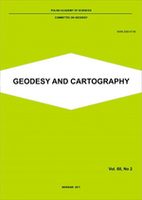
Geodesy and Cartography
Innovating Mapping Practices for Tomorrow's DiscoveriesGeodesy and Cartography, published by the Polska Akademia Nauk (Polish Academy of Sciences), is a premier open-access journal dedicated to advancing the fields of geodesy, cartography, and geographic information science. Since its inception in 2010, the journal has provided a vital platform for researchers, professionals, and students to share their findings, fostering innovation and collaboration in these critical areas of study. With its ISSN 2080-6736 and E-ISSN 2300-2581, the journal is accessible to a global audience, ensuring that cutting-edge research is readily available to enhance scientific understanding and application. The journal not only serves as a repository of knowledge but also aims to contribute to the development of best practices and methodologies within geospatial sciences, making it an essential resource for anyone invested in the ever-evolving landscape of mapping and spatial data analysis.

GEOMAGNETISM AND AERONOMY
Illuminating the Dynamics of Earth's Magnetic FieldGEOMAGNETISM AND AERONOMY, published by MAIK NAUKA/INTERPERIODICA/SPRINGER, is a prominent journal dedicated to advancing the fields of geophysics and planetary science. With ISSN 0016-7932 and E-ISSN 1555-645X, this journal serves as a critical platform for researchers to disseminate their findings on geomagnetic phenomena and aeronomical studies, fostering a deeper understanding of Earth's magnetic field dynamics and atmospheric interactions. Spanning publishing years from 1996 to 2024, it is categorized in the Q3 quartile for geophysics and Q4 for space and planetary science, reflecting its positioning within the academic landscape. Although not open access, readers and researchers can access valuable insights into geomagnetic and atmospheric research, contributing to ongoing discourse in these vital scientific domains. With a focus on innovative research, GEOMAGNETISM AND AERONOMY remains an essential resource for professionals and students aiming to deepen their expertise in Earth and planetary sciences.

Atmospheric Measurement Techniques
Advancing the Frontiers of Atmospheric Science.Atmospheric Measurement Techniques, published by COPERNICUS GESELLSCHAFT MBH, is a premier open-access journal that has been contributing to the field of atmospheric science since 2008. With its focus on advancing techniques for atmospheric observations and measurements, the journal has established itself as an authoritative source with a Q1 ranking in the Atmospheric Science category for 2023, placing it among the top journals in the field. Based in Germany, its commitment to accessibility ensures that researchers, professionals, and students can freely engage with high-quality research that influences environmental monitoring, climate studies, and atmospheric modeling. As of 2023, it successfully ranks 32nd out of 148 in Earth and Planetary Sciences—demonstrating its significant impact in the scientific community with a commendable 78th percentile status within this dynamic domain. Researchers focusing on innovative atmospheric measurement techniques will find this journal a vital platform for disseminating their findings and collaborating on cutting-edge research.
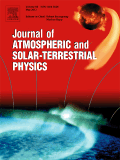
JOURNAL OF ATMOSPHERIC AND SOLAR-TERRESTRIAL PHYSICS
Fostering Interdisciplinary Dialogue in Atmospheric ScienceJournal of Atmospheric and Solar-Terrestrial Physics, published by Pergamon-Elsevier Science Ltd, stands as a pivotal academic resource in the realms of Atmospheric Science, Geophysics, and Space and Planetary Science. With an ISSN of 1364-6826 and an E-ISSN of 1879-1824, this journal encompasses a robust collection of research findings and reviews that address the intricacies of atmospheric processes and solar-terrestrial interactions. The journal has shown consistent academic performance, earning commendable rankings in 2023, including Q3 in Atmospheric Science and Q2 in Geophysics, reflecting its importance for scholarly communication and advancement in these fields. Spanning an impressive convergence of research from 1997 to 2024, it aims to foster interdisciplinary collaboration and inspire innovations among researchers, professionals, and students. Although it currently does not offer open access, the journal is committed to disseminating high-quality content that continues to drive forward our understanding of complex environmental phenomena.
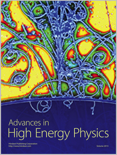
Advances in High Energy Physics
Pioneering Insights in the Realm of High Energy PhysicsAdvances in High Energy Physics, published by HINDAWI LTD, is a premier open-access journal dedicated to the progressive field of Nuclear and High Energy Physics. With an ISSN of 1687-7357 and an E-ISSN of 1687-7365, this journal has been at the forefront of scientific discourse in high energy physics since its inception in 2007. The journal is notable for its impact within the community, currently holding a Q2 ranking in 2023 and positioned at #36 out of 87 in its category according to Scopus, highlighting its significant contribution to ongoing research and advancement in the field. Its accessible nature enables researchers, professionals, and students to engage with cutting-edge findings that shape our understanding of the universe. Spanning publications from 2010 through 2024, Advances in High Energy Physics serves as an invaluable resource for those looking to stay informed about the latest developments and methodologies in high energy physics across the globe.
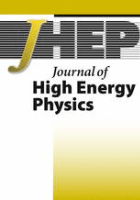
JOURNAL OF HIGH ENERGY PHYSICS
Empowering researchers with cutting-edge discoveries in physics.JOURNAL OF HIGH ENERGY PHYSICS, published by SPRINGER, stands at the forefront of research in the fields of nuclear and high energy physics. With an impressive impact factor and a Scopus ranking of #5 out of 87 in its category, it sits comfortably in the 94th percentile of academic journals worldwide. Since its inception in 1997 and transitioning to Open Access in 2014, the journal has committed itself to the dissemination of peer-reviewed, cutting-edge research that fosters collaboration and innovation across the global scientific community. Located in Germany and reaching audiences worldwide, the journal aims to provide a platform for scholars and researchers to share their findings, thus propelling advancements in theoretical and experimental physics. As it converges into 2024, the JOURNAL OF HIGH ENERGY PHYSICS continues to be an essential resource for anyone engaged in this dynamic field of study.
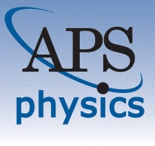
PHYSICAL REVIEW D
Advancing the Frontiers of Nuclear and High Energy PhysicsPHYSICAL REVIEW D, published by the American Physical Society, is a premier journal dedicated to the rapid dissemination of significant research findings in the fields of Nuclear and High Energy Physics as well as Physics and Astronomy. With an impressive Impact Factor and a prestigious Q1 ranking in 2023, it stands as one of the leading journals in its domain, with a Scopus ranking of #6 out of 87 in its category, placing it in the 93rd percentile. The journal welcomes rigorous theoretical and experimental studies that advance understandings in particle physics, cosmology, and quantum field theory. Although it does not provide open access, researchers gain a significant platform to reach a global audience and contribute to the ongoing discourse within the scientific community. Published regularly since its convergence starting in 1989, it remains essential for both emerging and established scholars looking to stay at the forefront of high-energy and nuclear physics research.

Boletim de Ciencias Geodesicas
Pioneering Discoveries in the Dynamic World of GeodesyBoletim de Ciências Geodésicas is an esteemed academic journal published by the Universidade Federal do Paraná within its Centro Politécnico. Focused on the dynamic field of Earth and Planetary Sciences, this Open Access journal has been a pivotal resource since 1997, fostering the dissemination of critical research and innovative methodologies. With an impact factor indicative of its relevance in the discipline, Boletim de Ciências Geodésicas ranks in the Q3 quartile for Earth and Planetary Sciences as of 2023, showcasing its commitment to quality scholarship in a competitive field. Researchers and students alike will benefit from access to cutting-edge findings, given its broad scope that encompasses various aspects of geodesy and related sciences. The journal's convergence of research from 2005 to 2024 ensures that it remains at the forefront of emerging trends and fundamental developments in the discipline, further enhancing its esteemed reputation in the academic community.

Acta Geodaetica et Geophysica
Innovating Research in Geology and GeophysicsActa Geodaetica et Geophysica is a prestigious journal published by Springer, focusing on the interdisciplinary domains of geodesy, geology, and geophysics. With an ISSN of 2213-5812 and E-ISSN of 2213-5820, this journal serves as a vital resource for researchers, professionals, and students interested in building and construction, as well as the broader aspects of Earth and planetary sciences. Operating since 2013 and poised to continue until 2024, Acta Geodaetica et Geophysica has consistently maintained its relevance within the academic community, evidenced by its Q3 quartile ranking in the fields of Building and Construction, Geology, and Geophysics for 2023. The journal's Scopus ranks highlight its competitive standing, ranking 118 out of 321 in Geology, and 66 out of 165 in Geophysics, reflecting its impactful contributions to the field. Although this journal does not offer open access, it remains an essential publication that enriches ongoing research and promotes knowledge dissemination in Hungary and beyond. Researchers and academics seeking to advance their studies will find valuable insights and rigorous analyses within its pages, making it a cornerstone of contemporary geoscience literature.
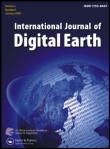
International Journal of Digital Earth
Transforming our understanding of the planet, digitally.Welcome to the International Journal of Digital Earth, a premier open-access journal published by Taylor & Francis Ltd, dedicated to advancing the field of digital geoscience. With its ISSN 1753-8947 and E-ISSN 1753-8955, this journal has established itself as a vital resource for scholars and practitioners alike since its inception in 2008. The journal is at the forefront of interdisciplinary research, showcasing a diverse scope from Earth sciences to computer science applications, evidenced by its impressive ranking in the 2023 Scopus database. It holds a Q1 categorization in Earth and Planetary Sciences, with a percentile rank among the top 16% of its peers, and also stands out in the Q2 quartile for both Computer Science Applications and Software disciplines. The journal's commitment to open access, established in 2022, underscores its dedication to disseminating knowledge and fostering collaboration. By providing a platform for high-quality research, the International Journal of Digital Earth plays a critical role in addressing the complexities of our changing planet through innovative digital solutions. Whether you are an experienced researcher or a student, this journal is an essential addition to your academic toolkit.